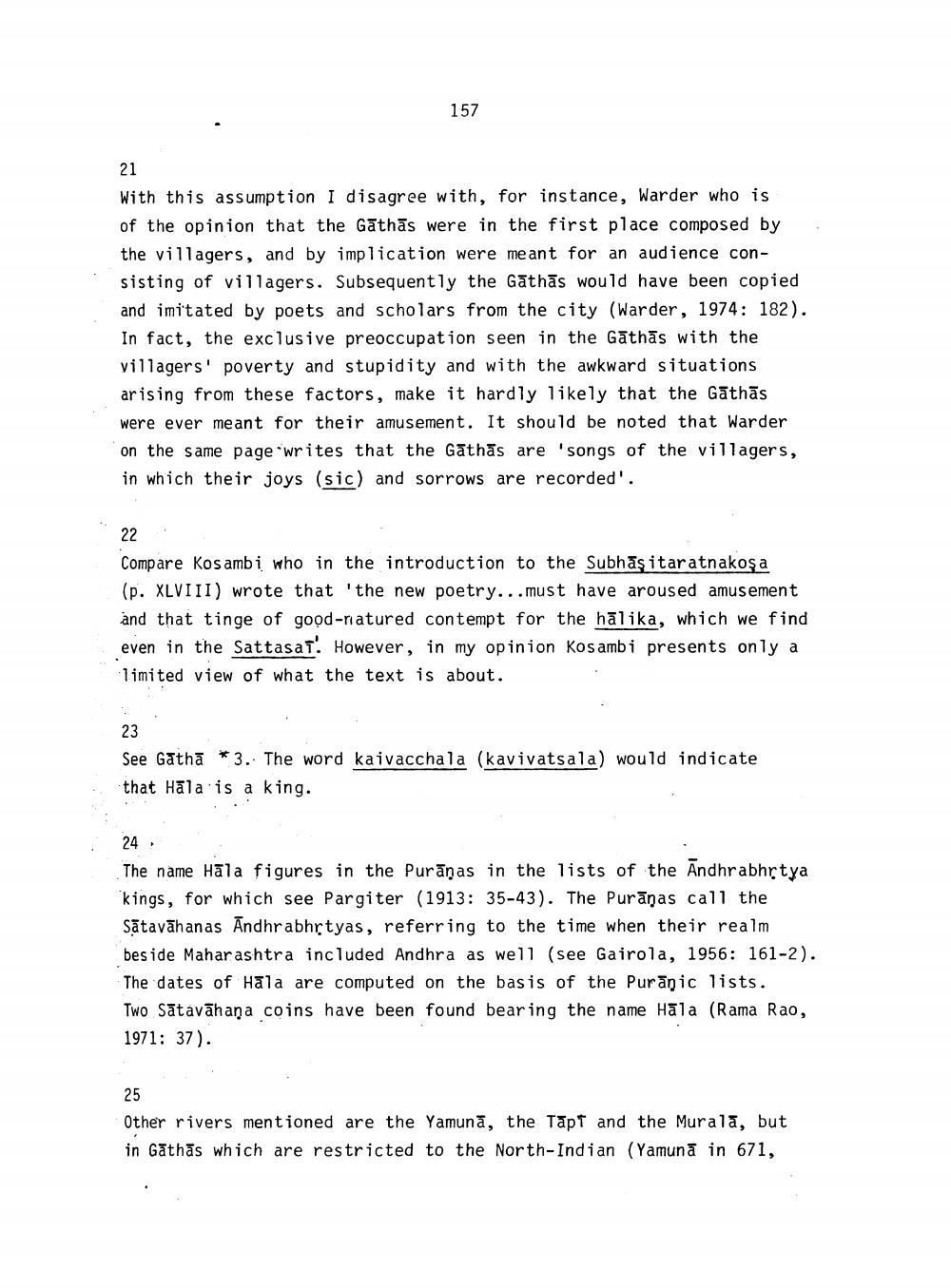________________
157
21
With this assumption I disagree with, for instance, Warder who is of the opinion that the Gathās were in the first place composed by the villagers, and by implication were meant for an audience consisting of villagers. Subsequently the Gathās would have been copied and imitated by poets and scholars from the city (Warder, 1974: 182). In fact, the exclusive preoccupation seen in the Gathās with the villagers' poverty and stupidity and with the awkward situations arising from these factors, make it hardly likely that the Gathās were ever meant for their amusement. It should be noted that Warder on the same page-writes that the Gathās are 'songs of the villagers, in which their joys (sic) and sorrows are recorded'.
Compare Kosambi who in the introduction to the Subhasitaratnakoşa (p. XLVIII) wrote that 'the new poetry... must have aroused amusement and that tinge of good-natured contempt for the hālika, which we find even in the Sattasat. However, in my opinion Kosambi presents only a limited view of what the text is about.
23 See Gathā *3. The word kaivacchala (kavivatsala) would indicate that Hāla is a king.
24 The name Hāla figures in the Purāṇas in the lists of the Andhrabhrtya kings, for which see Pargiter (1913: 35-43). The Purānas call the Sātavānanas Andhrabhrtyas, referring to the time when their realm beside Maharashtra included Andhra as well (see Gairola, 1956: 161-2). The dates of Hala are computed on the basis of the Purāņic lists. Two Sātavāhana coins have been found bearing the name Hala (Rama Rao, 1971: 37).
25 Other rivers mentioned are the Yamunā, the Tāpt and the Murală, but in Gathas which are restricted to the North-Indian (Yamuna in 671,




